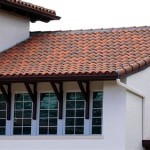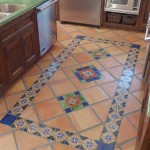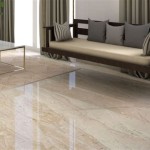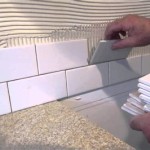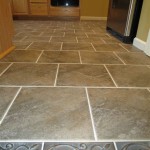Can You Put Backsplash Tile On Painted Drywall Ceilings And Walls?
The question of whether backsplash tile can be installed directly onto painted drywall ceilings and walls is a common one for homeowners considering a DIY renovation or looking to modernize their kitchens or bathrooms. The answer is complex and dependent on several factors. While it is technically possible in some situations, potential pitfalls exist that can compromise the longevity and aesthetics of the tile installation. This article will explore the key considerations, preparation steps, and alternative methods to ensure a successful and durable backsplash installation over painted drywall.
The suitability of installing tile directly on painted drywall hinges largely on the paint type, the condition of the drywall, and the specific location. Paint acts as a barrier between the tile adhesive and the porous drywall surface. This barrier can hinder proper bonding, leading to tile slippage, cracking, and eventual detachment. Furthermore, moisture penetration through grout lines can exacerbate the problem, causing the paint to peel and further weakening the adhesive bond. Therefore, careful evaluation and preparation are critical to mitigate these risks.
Assessing the Paint and Drywall
Before embarking on any tile installation, a thorough assessment of the existing paint and drywall is paramount. Several factors need to be considered. The type of paint is a significant determinant of adhesion success. High-gloss or semi-gloss paints, commonly utilized in kitchens and bathrooms due to their moisture resistance and ease of cleaning, present the greatest challenge. Their smooth, non-porous surface significantly reduces the adhesive's ability to grip. Matte or eggshell paints, while offering a slightly more textured surface, still require preparation to ensure adequate adhesion.
The condition of the existing paint is equally crucial. Any signs of chipping, peeling, cracking, or bubbling indicate underlying problems with the drywall or previous paint application. These issues must be addressed before any tile installation. Attempting to tile over compromised paint will inevitably lead to failure. Furthermore, the presence of mold or mildew necessitates immediate remediation before proceeding.
The drywall itself must be structurally sound. Look for signs of water damage, such as staining, swelling, or softness. Damaged drywall will not provide a stable substrate for the tile, regardless of the adhesive used. If the drywall is compromised, it is essential to replace the affected sections before proceeding with the tile installation. Attempting to tile over damaged drywall is a recipe for disaster.
Another aspect to consider is the weight and size of the tile being used. Heavier tiles require a stronger bond, making proper surface preparation even more critical. Small, lightweight tiles are generally more forgiving than large, heavy tiles. The larger and heavier the tile, the greater the stress on the adhesive and the higher the risk of failure if the surface is not properly prepared.
Finally, the location of the backsplash needs evaluation. Areas prone to high moisture exposure, such as directly behind a sink or around a shower, require extra precautions. In these areas, a moisture-resistant substrate, such as cement board, is generally recommended over drywall, regardless of whether it is painted or not. The constant exposure to water can quickly degrade even properly prepared painted drywall, leading to tile detachment.
Surface Preparation Techniques
If the paint and drywall are deemed to be in acceptable condition, surface preparation is the next vital step. The goal is to create a clean, porous surface that will allow the tile adhesive to bond effectively. Several techniques can be employed to achieve this. Proper ventilation is crucial throughout the surface preparation and tile installation process to prevent the build-up of dust and fumes.
One common method is to thoroughly clean the painted surface with a degreasing cleanser. This removes any dirt, grease, oil, or other contaminants that could interfere with adhesion. Follow the cleanser's instructions carefully and rinse the surface thoroughly with clean water. Allow the drywall to dry completely before proceeding.
Sanding the painted surface is a critical step to improve adhesion. Use medium-grit sandpaper (around 80-120 grit) to roughen the surface and create a mechanical key for the adhesive. Sand evenly over the entire area to be tiled, ensuring that the paint is scuffed without completely removing it. After sanding, remove all sanding dust with a vacuum cleaner and a damp cloth. A tack cloth can also be used to remove any remaining dust particles.
Applying a primer specifically designed for tile installation is highly recommended. These primers often contain bonding agents that improve the adhesion between the painted surface and the tile adhesive. Follow the manufacturer's instructions for application and drying time. Some primers may require multiple coats for optimal performance. Using a high-quality primer is a relatively inexpensive way to significantly improve the chances of a successful tile installation.
In some cases, a bonding agent can be used in lieu of or in addition to a primer. Bonding agents are typically applied directly to the painted surface and allowed to dry to a tacky consistency. The tile adhesive is then applied while the bonding agent is still tacky, creating a strong bond between the two surfaces. Consult the manufacturer's instructions for specific application guidelines.
Alternative Substrates and Installation Methods
Even with meticulous preparation, installing tile directly onto painted drywall carries inherent risks. Therefore, exploring alternative substrates and installation methods is often advisable, particularly in high-moisture areas or when using heavier tiles. Several options offer a more reliable and durable solution.
Cement board, also known as cement backer board, is a popular choice for tile installations in kitchens and bathrooms. It is a water-resistant material that provides a stable and durable substrate for tile. Cement board is typically screwed directly to the wall studs, creating a solid foundation for the tile installation. It is particularly well-suited for areas exposed to high levels of moisture.
Another option is to install a waterproof membrane over the drywall before tiling. These membranes are designed to prevent water from penetrating the drywall, protecting it from damage and preventing mold growth. Waterproof membranes can be applied as a liquid or as a sheet material. They provide an extra layer of protection against moisture intrusion.
When using cement board or a waterproof membrane, it is important to follow the manufacturer's instructions carefully. Proper installation is crucial to ensure the effectiveness of these materials. Seams and joints should be properly sealed to prevent water penetration. Using the correct fasteners and adhesives is also essential.
Another important consideration is the type of tile adhesive used. Modified thin-set mortar is generally recommended for tile installations on drywall or cement board. Modified thin-set contains polymers that improve its adhesion and flexibility, making it less likely to crack or detach. Always follow the manufacturer's instructions for mixing and applying the thin-set mortar.
Grouting is also a critical step in the tile installation process. Grout fills the spaces between the tiles, providing a finished look and preventing water from penetrating the substrate. Use a high-quality grout that is specifically designed for tile installations. Seal the grout after it has cured to further protect it from water damage. Regular cleaning and maintenance of the grout will help to prolong the life of the tile installation.
In conclusion, while installing backsplash tile on painted drywall ceilings and walls is possible, careful consideration, meticulous preparation, and the selection of appropriate materials are paramount. Assessing the condition of the existing paint and drywall, employing proper surface preparation techniques, and exploring alternative substrates and installation methods are all crucial steps to ensure a successful and durable tile installation. Consulting with a professional tile installer can provide valuable guidance and ensure that the project is completed correctly.

Can You Tile Over Drywall Master Building Materials Blog

Can You Tile Over Drywall Master Building Materials Blog

How To Diy Paint Your Kitchen Backsplash Tile So It Lasts For Years Mary Jo On The Go

Kitchen Tile Backsplash Why You Should Take It All The Way Up To Ceiling

Kitchen Tile Backsplash Why You Should Take It All The Way Up To Ceiling

How To Prepare Drywall For A Tile Backsplash Mr Handyman

How To Prepare Drywall For A Tile Backsplash Mr Handyman

How To Install L And Stick Tile Backsplash On A Wall Angela Marie Made

Kitchen Tile Backsplash Why You Should Take It All The Way Up To Ceiling

How I Transformed My Kitchen With Paint House Mix
Related Posts

